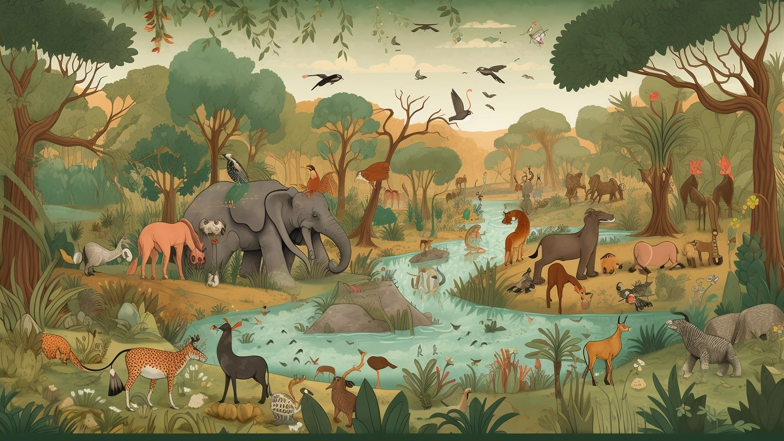
Join us on a journey through some of the world's most diverse and endangered ecosystems. In this article, we'll explore the wonders of biodiversity hotspots and discover the importance of protecting them.
Tropical rainforests are perhaps the most famous biodiversity hotspots. These forests are home to an incredible variety of plant and animal species, from tiny insects to large mammals. Some of the most iconic rainforest animals include orangutans, jaguars, and toucans.
But rainforests are under threat. Deforestation is one of the main reasons why these ecosystems are endangered. Trees are being cut down at an alarming rate to make way for agriculture, mining, and urbanization. This means that many rainforest species are losing their habitats and their populations are declining.
Another example of a biodiversity hotspot is the coral reef ecosystem. Coral reefs are found in shallow waters around the world, and they are home to an incredible variety of marine life. Coral reefs are often called the "rainforests of the sea" because of their diversity.
But like rainforests, coral reefs are under threat. Climate change is one of the main factors that is causing coral reefs to decline. Warmer temperatures are causing coral to bleach and die, which impacts the entire ecosystem. Pollution and overfishing are other threats that are impacting coral reefs.
Mangrove forests are another example of a biodiversity hotspot. These forests are found in coastal areas around the world, and they are home to a variety of plant and animal species. Mangroves are important because they provide habitat for many marine animals, including fish and shrimp.
But mangroves are also under threat. Urbanization and land development are causing mangrove forests to be cleared, which impacts the entire ecosystem. Climate change is also causing problems, as rising sea levels threaten the survival of mangroves.
These examples show how important it is to protect biodiversity hotspots. These ecosystems are incredibly diverse and provide habitat for countless plant and animal species. Without these ecosystems, many species would go extinct.
There are several ways to protect biodiversity hotspots. One way is to create protected areas, such as national parks or wildlife reserves. These areas can help to protect the ecosystems and the species that live there.
Another way to protect biodiversity hotspots is to promote sustainable land use practices. This means using land in a way that doesn't harm the environment or the ecosystems that live there. Sustainable land use practices can include things like organic farming, reforestation, and using renewable energy sources.
Education and awareness are also important in protecting biodiversity hotspots. Many people are unaware of the importance of these ecosystems and the threats they face. By educating people about the importance of these ecosystems, we can help to raise awareness and promote conservation efforts.
In conclusion, biodiversity hotspots are incredibly important ecosystems that are under threat. Rainforests, coral reefs, and mangrove forests are just a few examples of these hotspots. Protecting these ecosystems is crucial for the survival of countless plant and animal species. We can protect these hotspots by creating protected areas, promoting sustainable land use practices, and educating people about the importance of these ecosystems. By working together, we can ensure that biodiversity hotspots continue to thrive for generations to come.
Comments
Post a Comment